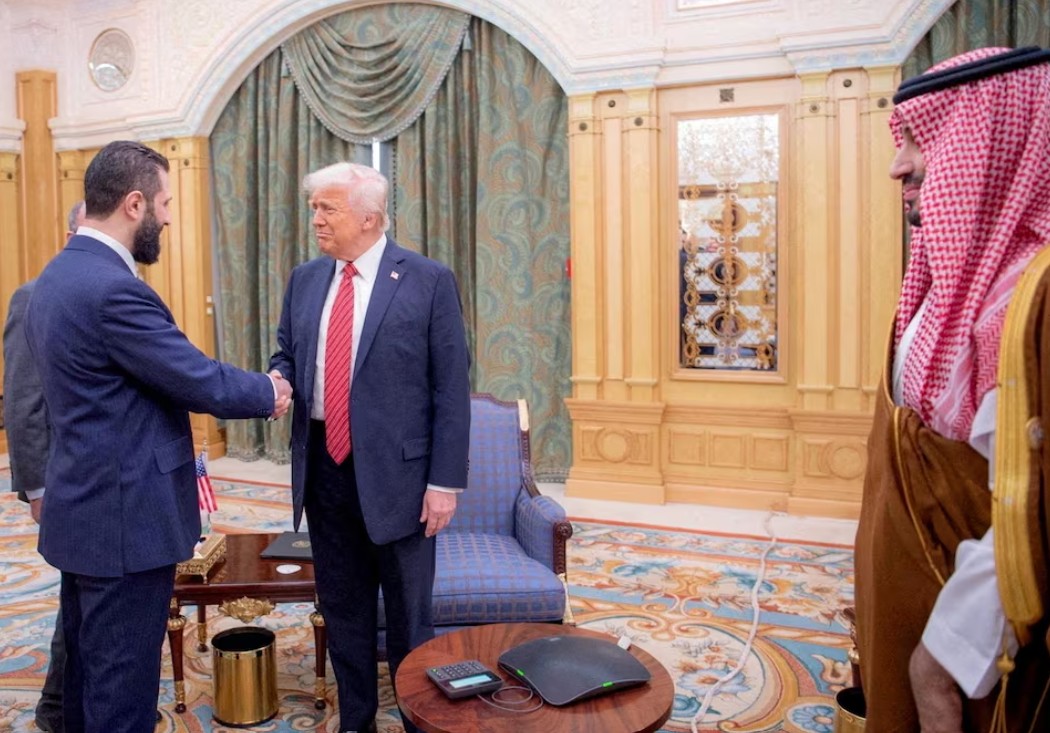Iran to transfer Afghan militia out of Syria in message to Biden: report

Iran transferring Afghan militia as part of policy with new US administration, according to Syria TV report
In a sudden and unexpected move from Iran, whose policies indicate its adherence to what it considers the "gains" it has achieved in Syria, its Foreign Minister, Javad Zarif, has announced Tehran's intention to expel members of the Afghan ‘Fatemiyoun’ militia from Syria and return them to their country. The move comes despite Zarif previously acknowledging the Fatemiyoun militia as the most powerful Iranian-affiliated militia in Syria, reports Syria TV.
The decision comes at a time when the city of Al-Bukamal on the Syrian-Iraqi border, the most important strategic city for Iran in Syria, is witnessing an increasing presence of Russian forces and affiliated militias, along with security coordination between Baghdad and Moscow, with questions arising about Iran's objective in this step and the messages it carries, and what will be gained by it, aside from Tehran's policy of expansion and infiltration.
Dr. Omar Abdul Sattar, an Iraqi expert in international relations, told the Syria TV news site that Iran is preparing to receive the new American president, Joe Biden, through the use of several strategies, suggesting that events in Albu Kamal constitute an agreed ‘repositioning’ between Moscow and Tehran .
During the last two weeks, Al-Bukamal has witnessed extensive Russian military moves, represented by the military deployment of elements of the Russian army and its ‘Fifth Corps' militia in locations where Iranian militias and others near their sites of deployment had been based; this was preceded by the Russian ambassador in Baghdad examining the security file related to the Iraqi-Syrian border with Iraqi National Security Adviser, Qasim Al-Araji, with their meeting followed by the arrival of Russian army units at the border.
Abdul Sattar suggested that Russia is trying to control the movements of the Iranian militias, as a reflection of its security coordination with Israel and in implementation of its understandings with Saudi Arabia, which is also unhappy at Iran's expansion in the Middle East.
Iran's decision to return the ‘Fatemiyoun’ militia represents a calculated move by Tehran in response to these events and to US policy, said Abd al-Sattar, adding, "Iran is trying to reveal Biden's intentions by sending him mixed messages. On the one hand it is escalating the nuclear file and on the other it’s coordinating with Russia in Albu Kamal while its militias are bombing the US embassy [in Baghdad]. All these actions constitute messages to the new US administration, saying, ‘Donald Trump's sanctions have not changed and will not change our behaviour, and have failed. "
The Iraqi expert believes that Iran’s regime knows that, under Biden’s presidency, Iraq will be the heart of Iran's comprehensive regional strategy, adding that what will happen in Baghdad will be linked to what will happen in Syria.
In 2012, Iran’s regime began recruiting and conscripting Afghan Shiites in Iran and Afghanistan, and formed the ‘Fatemiyoun’ Brigade, which appeared in Syria in November the same year, with the number of its fighters is estimated at between 3,000 and 4,000, distributed between three brigades in Damascus, Aleppo, Hama, and later in Deir Ezzor.
According to the Iranian foreign minister, the Afghan militiamen went to fight in Syria for their religious beliefs, installing the flag of Afghanistan in their camps and displaying the image of the Afghan president. Zarif further claimed that 2,000 of the original 5,000 Fatemiyoun Brigade militiamen are still in Syria in Syria, while the rest have returned to their "normal lives." ".
In a response to a question during an interview on Afghan TV’s TOLOnews on whether he supports the idea of regrouping the ‘Fatemiyoun’ militia against the ‘Islamic State’ organization in Afghanistan, Zarif said that this “depends on the decision of the Afghan government," adding, "We have supported people to fight ISIS in Baghdad, Najaf and Karbala so that no one is forced to fight ISIS in Kabul and Kandahar. That is why we supported them in Tehran, Zahedan, Kermanshah, or Baghdad, Karbala and Najaf. But the threat posed by ISIS has not been completely removed.”
In this context, Basil Haffar, director of the Idrak Center for Studies and Consultations, said in an interview with Syria TV that this is not the first time that Iran’s regime has made claims of this kind noting that it had previously claimed years ago that it is the only safe country against ISIS attacks and “the most powerful force to counter the group’s attacks.”
It seems that Iran has been trying for quite some time to justify its presence in Syria and to create an additional role for itself in the region, legitimizing its expansionism to some degree by claiming to be the country that can encircle or control the ‘Islamic State’ organization, said Haffar, pointing out that these claims have frequently been made in the context of the Fatemiyoun Brigade, with Iran’s ability to control and transfer this militia having two objectives. The first is a message not only to Israel, but to the international community and particularly to the USA about Iran's willingness to negotiate over the militia file, which is one of the most important issues that the United States talks about constantly when discussing Iran and its role in the region, especially in the cases of Syria and Iraq.
Haffar stated that Iran is trying to argue that its presence in Syria could serve the international plans in one way or another, noting that this matter was raised in 2015 and 2016, when Russia talked about removing Turkey from Syria because the Assad regime did not allow it to do so, at which point the Turks responded by asserting that their presence in the country is linked to that of other parties, a reference to Iran’s regime.
Haffar concluded, "Zarif is trying to say that their presence in Syria is a control of the militias and not a messenger for them, and that ‘We - that is, Iran - are able to relocate the militias in other areas whenever we want.’"
Some Fatemiyoun Brigade leaders fought in the Abu Dhar al-Ghaffari Brigade militia during the Iraq-Iran war between 1980 and 1988, and in the ‘Muhammad’s Army’ in the Soviet-Afghan war between 1979 and 1989, further evidence to substantiate the Iranian Foreign Minister’s claims about the militia’s strength and military experience.
In March 2019, the Commander-in-Chief of Iran’s Islamic Revolutionary Guards Corps (IRGC), Major General Muhammad Ali Jafari, said that "Popular forces have been formed in Syria that include about 100,000 fighters," referring to the number of Iranian-backed militia personnel Syria.
In early 2017, the Afghan capital, Kabul, announced the killing of more than 1,000 Afghan militia members supporting the Assad regime, and affiliated with the Iranian Revolutionary Guard, on the battlefronts in Syria.
A report by Afghan state TV stated, at the time, that over 1,000 Afghan Shiite militias sent by Iran to Syria had been killed, without specifying the period in which they were killed.
The losses of the "Fatemiyoun" militia affected its leader, Ali Reza Tawassli, who was killed in Daraa in 2015, with the militia’s second in command, Muhammad Hassan Hosseini (Syed Hakim), being killed by ISIS in the eastern countryside of Palmyra in June 2016.
In recent years, the Fatemiyoun militia formed a spearhead in the battles waged by Iran on the side of the Assad regime forces, as its members were sent to carry out incursions and close clashes with the opposition factions.
Afghanistan is preparing for the withdrawal of all American soldiers from its lands, according to what US President Donald Trump confirmed last October.
Iran’s regime views the US presence, whether in Iraq, Afghanistan, or any other country in the region, as a “force threatening peace and security in the region,” according to Zarif’s description, calling for a “legal and calculated” withdrawal of US forces from Afghanistan and a handing over of tasks to Afghan forces in a responsible manner.
The Iraqi expert in international relations, Dr. Omar Abdul Sattar, suggested that the American withdrawal from Afghanistan and Iraq is also linked to Iran's decision to return the Fatemiyoun Brigade to Kabul.
Dr. Abdul Sattar said that Iran’s regime views itself as a superpower and deals with the world accordingly. Therefore, he said, it is preparing for a new era by repositioning itself in a way that serves its future interests.
Abd al-Sattar pointed out that, despite the Iranian regime’s aspirations, the reality in the Middle East no longer allows it to expand, with Tehran no longer able to mobilize in the region, in light of domestic conditions in Iran that may explode at any moment and modest economic capabilities, and therefore it intends to expand in South Asia instead. In Afghanistan, an Iranian recession is expected in the Middle East, especially given the increasingly positive turn in relations between Israel and the Gulf, meaning that the Middle East is heading for re-adjustment, which may be a blow to Iran.
Abd al-Sattar added, "Iran will work to expand in Afghanistan in 2021, as it expanded in Syria in 2011."
Original Syria TV report (in Arabic), published December 23, 2020: https://www.syria.tv/%D8%A5%D9%8A%D8%B1%D8%A7%D9%86-%D8%AA%D8%B1%D8%A7%D...






